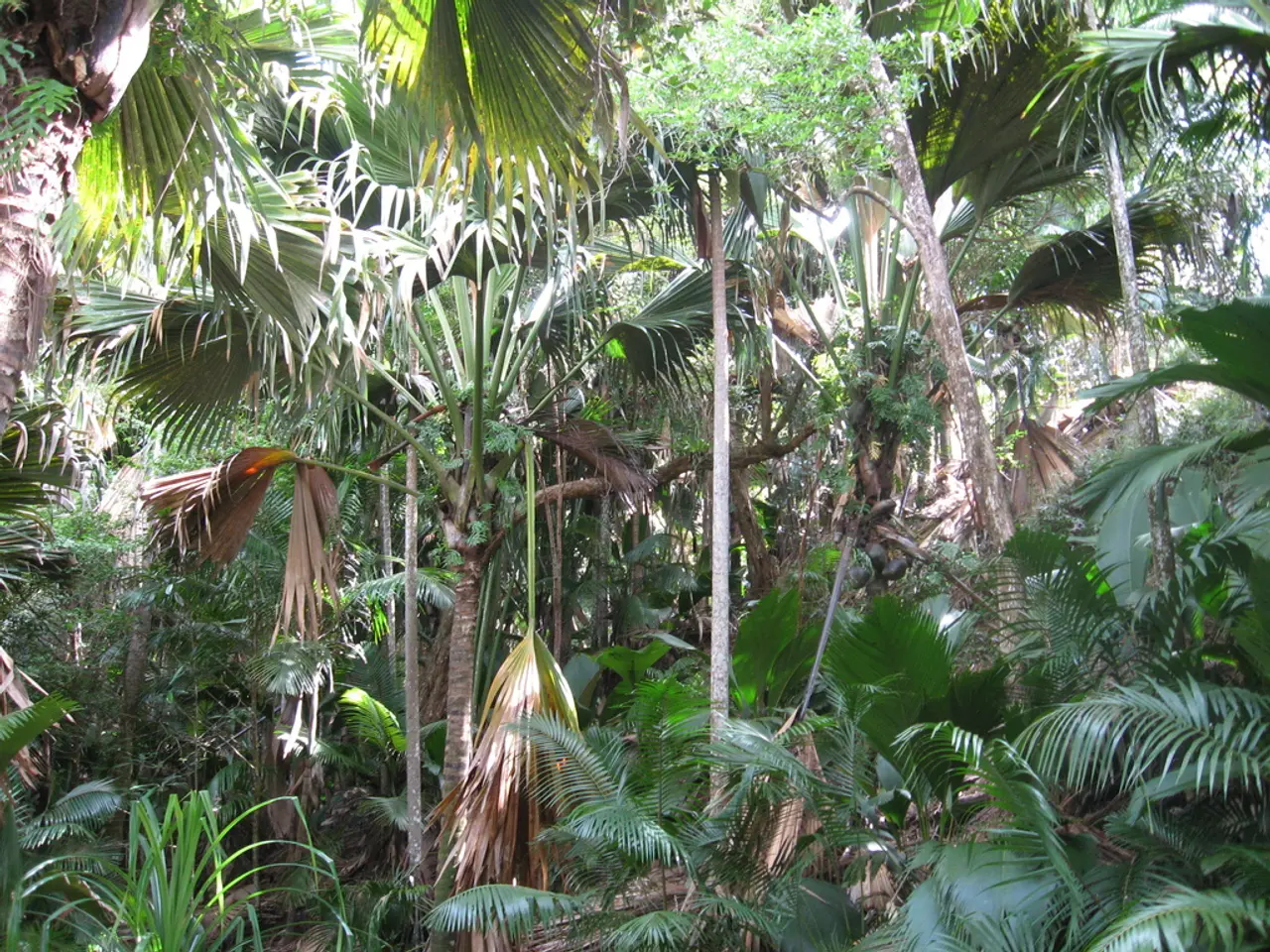Guide for Crafting Mini-Ecosystems Using Permaculture Methods
In the realm of sustainable gardening and farming, the concept of microclimates plays a pivotal role. These small, localised areas with their own unique climate are shaped by factors such as topography, aspect, slope, structures, altitude, and more. By harnessing the power of microclimates, permaculture enthusiasts can create diverse, thriving ecosystems that boost biodiversity and productivity.
One of the key ways permaculture creates beneficial microclimates is through layered planting. Establishing canopy trees, understory shrubs, ground covers, and root crops in vertical layers creates varied shade and wind protection. This layering moderates temperature extremes and conserves soil moisture, fostering environments suitable for shade-tolerant and moisture-loving plants.
Another strategy is the use of mulch and Hügelkultur beds. Applying thick mulches or building raised beds with decomposing wood (Hügelkultur) generates warmth through decomposition and helps retain soil moisture. These warm beds create extended growing seasons, especially in cooler climates, and stabilise soil temperature and humidity.
Strategic plant spacing and placement also play a significant role. Positioning plants according to their mature sizes and light requirements prevents overcrowding while maximising microclimate benefits. For example, placing shade-tolerant plants under canopy trees utilises cooler, moister microclimates and reduces water stress.
Water management is another crucial aspect of permaculture. Permaculture encourages capturing and storing water, such as through swales or rain gardens, to create moist microhabitats that benefit certain plants and increase ecosystem diversity.
Integrating wildlife is another key element. Attracting pollinators like bees and butterflies and beneficial animals such as chickens supports pollination and natural pest control, which enhance plant health and encourage biodiversity.
Agroforestry systems, where a mixture of medicinal and food plants are grown alongside forest trees, create shaded conditions that form ideal microclimates for shade-loving species, improve soil fertility, and enhance biodiversity by mimicking natural forest layers.
Diversity and edge effects are also essential. Including a wide variety of plants, especially native species, and creating productive edges (transitional zones between ecosystems) increases habitat diversity. This supports complex ecological interactions, pest control, and increased pollinator activity, contributing to a resilient ecosystem.
Trees and vines help by shading in summer and letting sunlight through in winter. Grazing animals manage vegetation, influence light and air flow, provide manure for soil fertility. Chickens and other birds help with pest control and soil aeration, making the area healthier. Earthworms contribute to soil health, affecting water retention and aeration.
Effective microclimate management requires constant climate data collection, watching, and adjusting. Climate data is key to understanding local conditions and making informed decisions about planting strategies, water management, and animal integration.
The future of microclimate creation in permaculture is linked to tackling global issues like climate change and food security. Integrating traditional ecological knowledge with modern science opens up new paths for innovation. New technology, like precision agriculture tools and climate models, will help us better design and manage microclimates.
As climate change worsens, the ability to create resilient microclimates will become more crucial. Self-regulation and feedback are key principles in permaculture design, stressing the need for providing multiple ways to meet critical needs. Urbanisation can cause heat islands, making cities warmer than suburbs and changing local weather. However, there's a growing interest in urban permaculture, where creating microclimates can transform city areas.
By working with nature, not against it, permaculture design creates sustainable and productive systems. Experts like Geoff Lawton, a renowned PDC Designer and Teacher, believe that solving global problems in gardens is not just possible but necessary for a better future. As we move forward, the future of microclimate creation in permaculture offers solutions for climate change, sustainable agriculture, and regenerative design.
- By understanding and manipulating microclimates, permaculture advocates focus on creating diverse, thriving ecosystems that promote soil health, biodiversity, and productivity.
- Layered planting, a crucial strategy in permaculture, creates varyingshade and wind protection, which moderates temperature extremes and conserves soil moisture.
- Mulch and Hügelkultur beds are employed to generate warmth through decomposition, helping retain soil moisture and creating an extended growing season in cooler climates.
- Strategic plant spacing and placement, ensuring proper light requirements and preventing overcrowding, maximize microclimate benefits.
- Water management, such as capturing and storing water through swales or rain gardens, helps create moist microhabitats that increase ecosystem diversity.
- Integrating wildlife, like bees, butterflies, chickens, and earthworms, supports pollination, natural pest control, and soil health.
- Agroforestry systems mimicking natural forest layers improve soil fertility, enhance biodiversity, and create ideal microclimates for shade-loving species.
- Diversity and edge effects, including a wide variety of native plants and creating productive edges, support complex ecological interactions and contribute to a resilient ecosystem.




